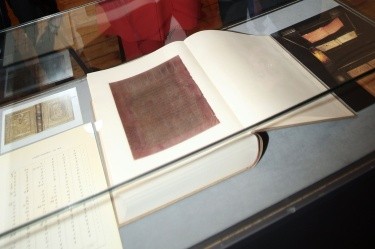| Home»News »The artifacts of the Goths tribes of 4 century A.D. in Bulgaria |
| The artifacts of the Goths tribes of 4 century A.D. in Bulgaria |
| A clay form for making gold and silver jewelry was found in the Roman town of Nicopolis ad Istrum near Veliko Tarnovo, Bulgaria in 2011. The archaeologists believe the clay jewelry form was typical only for the tribes of the Goths. |
|
|
The tourists of tours to Bulgaria also were able to see in the National Library of Bulgaria in Sofia in 2007 the photocopy of the oldest available silver bible of the Goths so called Codex Argentous dated 6 century as the library of the University of Uppsala, Sweden keeps the original of Codex Argentous. |
|
|
The tourists of tours to Bulgaria also were able to see in the National Library of Bulgaria in Sofia in 2007 the photocopy of the oldest available silver bible of the Goths so called Codex Argentous dated 6 century as the library of the University of Uppsala, Sweden keeps the original of Codex Argentous. |
|
|
The archaeologists said the Roman town of Nicopolis ad Istrum used to be a place of the palace of the bishop Ulfilas the Goth who is famous by ordering the first translation of the Bible from Greek to the language of the Goths. For this he devised the Gothic alphabet. |
|
|
The oldest available silver bible of the Goths so called Codex Argentous was a copy of the first Bible of the Goths the Bible of Ulfilas from the lands of modern Bulgaria. |
|
|
The Roman town of Nicopolis ad Istrum was set up in 102 A.D. after the Roman troops conquered Dacia but the Goths took it in 3 century A.D. |
|
|
In the 3rd century the Goths ravaged the Balkan Peninsula and Anatolia as far as Cyprus, sacking Athens, Byzantium, and Sparta. |
|

|
| BOOK A TOUR » | BOOK A HOTEL » | BOOK A TRIP » |

